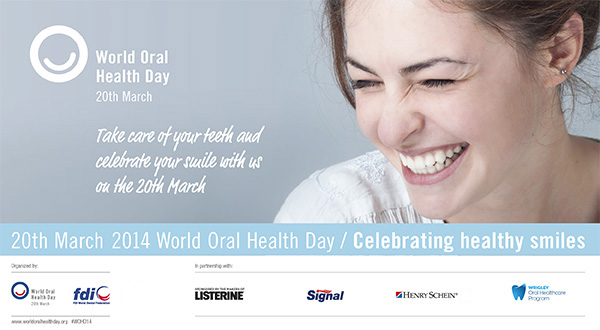 According to a white paper released in March 2014 by the World Dental Federation (FDI), oral diseases were among the most common diseases of humankind. This is still true in 2020, yet they receive little attention in many countries with weak health care systems. Despite a high social and economic burden from oral diseases they are considered a neglected area of international health. World Oral Health Day provides an opportunity to increase awareness of the poor state of oral health in many places and offers an occasion to highlight realistic and cost- effective solutions for health care systems and individuals alike.
According to a white paper released in March 2014 by the World Dental Federation (FDI), oral diseases were among the most common diseases of humankind. This is still true in 2020, yet they receive little attention in many countries with weak health care systems. Despite a high social and economic burden from oral diseases they are considered a neglected area of international health. World Oral Health Day provides an opportunity to increase awareness of the poor state of oral health in many places and offers an occasion to highlight realistic and cost- effective solutions for health care systems and individuals alike.
WHAT IS ORAL HEALTH?
Oral health is more than dental health. It includes healthy gums, hard and soft palate, linings of the mouth and throat, tongue, lips, salivary glands, chewing muscles, and upper and lower jaws. Good oral health enables us to speak, smile, kiss, breathe, whistle, smell, taste, drink, eat, bite, chew, swallow and express feelings. The oral cavity plays a central role for intake of basic nutrition and protection against microbial infections.
The World Health Organization (WHO) defines oral health as “a state of being free from mouth and facial pain, oral and throat cancer, oral infection and sores, periodontal (gum) disease, tooth decay, tooth loss, and other diseases and disorders that limit an individual’s capacity in biting, chewing, smiling, speaking, and psychosocial wellbeing” .
WHAT IS THE CONNECTION BETWEEN ORAL HEALTH AND GENERAL HEALTH?
Oral health and general health have close linkages. On the one hand, oral health can be compromised by a number
of chronic and infectious diseases which show symptoms in the mouth. On the other hand, oral diseases can lead
to infection, inflammation, and other serious impacts on overall health. Thus, maintaining good oral health is crucial to sustain general health and vice versa.
Click ORAL HEALTH WORLD WIDE to access the full white paper.